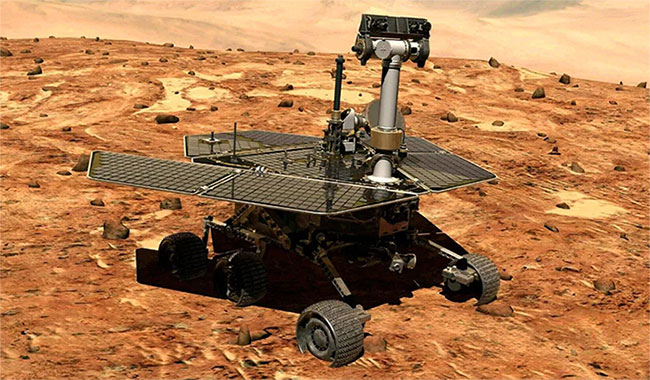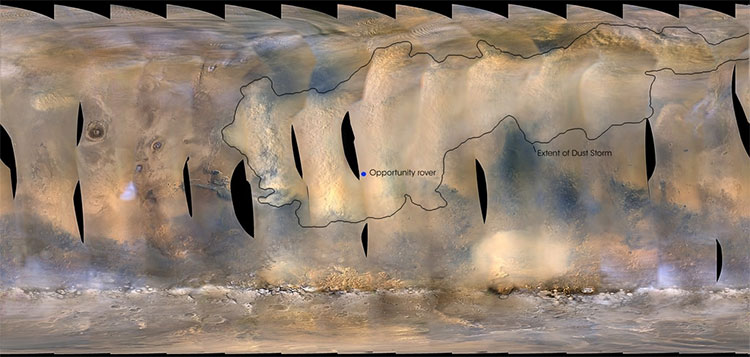NASA's explorers 'died' after 15 years of exploring Mars
The historic dust storm on the red planet makes the Opportunity explorer vehicle unable to reload energy and lose contact with the Earth.
NASA stated that the Opportunity exploration mission of Mars had officially ended on February 13, Guardian reported. The car met a giant dust storm and did not transmit signals to Earth for 8 months. Experts repeatedly sought to contact him again, the last time on February 12, but did not receive a response.

Adventurer vehicle on the surface of Mars.(Photo: AP).
"I stand here, with deep respect and gratitude, declaring the Opportunity mission has been completed , " said Thomas Zurbuchen at a press conference of NASA's Jet Propulsion Laboratory (JPL). He also said that explorer ships help change people's understanding of Earth and Mars and bring many advances in science.
Opportunity landed in January 2004, shortly after the "brother" Spirit landed. The duo is part of NASA's Mars Expedition Program. However, Spirit was stuck in soft ground in 2009 and was determined to be shut down in 2011.
Opportunity continues to exist on the surface of the red planet and transmit data to the Earth, like a "geologist" working remotely. The car is designed to operate for 90 days with a travel distance of about one kilometer. However, it ran over 45km and worked for 15 years.
"In the past, we thought that dust in the air would accumulate on solar panels, eventually losing energy. We did not expect the wind to come periodically and blow away the dust on it. This helps the car. Overcoming the first winter as well as every other winter on the red planet , ' said John Callas, project manager for Mars Explorers Vehicle.

Opportunity vehicle (blue dot) in Mars dust storm on 6/6/2018.(Photo: NASA).
Finally, Opportunity cannot withstand the historic dust storm on the red planet, said Abigail Fraeman. The storm covered the sky so much that the car could not see the Sun and the solar panels could not recharge.
Opportunity to detect particular rocks that are rich in iron, find signs of water and first detect meteorites on another planet Earth. The car sends many impressive images such as the sand vortex sweeping over the surface of the red planet or panoramic photos showing spectacular views of the craters. It also inspires many people to pursue science and facilitate the development of new tasks.
The end brings a lot of emotion, according to Professor Andrew Coates, planetary scientist at the Mullard Space Science Laboratory at the University of London. " We praised the achievements of the car in the journey of exploring Mars, but it was also heartbreaking to lose an old friend," he said.
- Imagine human life when settling down on Mars
- Heat shield in Mars mission $ 2 billion cracked
- Astronaut explores 'Mars' on ... Earth
- Robot explorer Mars moves worm-type
- What mystery of Mars awaits discovery?
- Journey of 50 years of exploring Mars
- 'White Christmas' on the surface of the red planet
- Opportunity: A self-propelled self-propelled robot rolls 12 years on Mars
- NASA considered genetic modification for astronauts to Mars
- NASA equipped lasers for Mars to explore Mars
- People are about to turn Mars into colonies?
- NASA's Mars explorer car
 Announced 3 houses on the Moon and Mars
Announced 3 houses on the Moon and Mars Science proves: Mars also knows 'deflated'
Science proves: Mars also knows 'deflated' Elon Musk announced the price for a Mars trip was 11.6 billion VND, free of charge
Elon Musk announced the price for a Mars trip was 11.6 billion VND, free of charge NASA discovered strange 'gate' on Mars, is the hiding place found?
NASA discovered strange 'gate' on Mars, is the hiding place found?